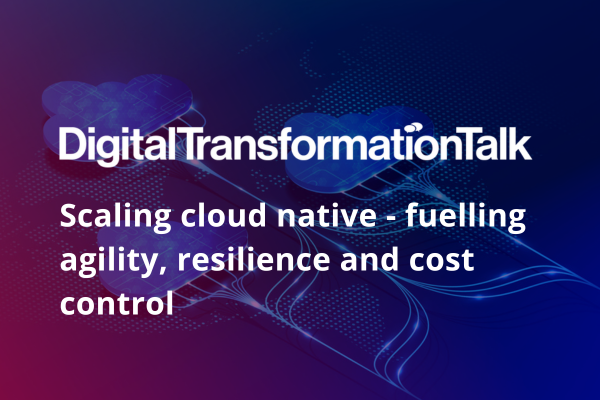The data crisis holding back businesses

Richard Bovey at AND Digital describes how the way corporate data is governed is preventing businesses from unlocking its full value
As businesses accelerate their digital transformation strategies, the role of data has evolved from a back-office support function to a core strategic asset. Yet, despite growing investments in AI and advanced analytics, many organisations continue to struggle with unlocking the full value of their data.
According to AND Digital’s Know Me or Lose Me report, 52 per cent of businesses describe their organisation’s collection and management of customer data as ‘chaos’, but this chaos isn’t just an inconvenience; it’s eroding customer loyalty, throttling innovation and making it near impossible to deliver seamless, personalised experiences at scale.
Data silos are killing agility
At the heart of the problem are structural issues. Nearly 48 per cent of businesses admit they don’t have a formal data governance framework in place. That means no clear data ownership, no consistency in how data is classified or maintained, and no real guardrails on quality or access. Yet the consequences are systemic.
Disconnected teams work from conflicting data sources, which means business units may end up duplicating efforts or make decisions based on flawed information. When agility is needed most, organisations find themselves stuck and unable to respond quickly to market shifts, customer feedback or emerging opportunities.
These siloes not only slow down an organisation but also risk eroding customer trust altogether. 67 per cent of businesses agree that they’ll lose customers if they don’t improve customer experience in the next 12 months. However, customer experience in the age of AI is more than optimising your data; it’s about having data governance and ethical principles that represent your customer and minimise bias creeping in.
Without a unified data strategy and ethical considerations, speed and flexibility remain out of reach for business functions and facing this requires more than just tooling. It demands a rethink of the entire data operating model, with governance, integration, and cross-functional alignment at the forefront.
No real-time data, no competitive edge
Digital leaders know that being fast beats being first. In today’s market, competitive advantage comes from reacting in real-time, whether that means adjusting pricing dynamically, responding to customer behaviour as it happens, or re-routing logistics to avoid delays.
But for many, real-time remains an aspiration, not a reality.
Despite the increasing investment in digital platforms, many businesses are still reliant on legacy data infrastructure and batch-processing models. Data is often delayed by hours, or even days, before it reaches the teams or systems that it needs and yet 56 per cent of organisations admit to making AI-driven decisions while knowing their data may be flawed.
AI-driven decision-making on flawed data is a recipe for potential short-term wins but long-term losses. Flawed data can introduce hallucinations and bias in decision making, resulting in harmful outputs. Whether it’s a marketing campaign launched with outdated targeting, or a recommendation engine trained on incomplete inputs, decisions based on lagging data can do more harm than good.
Companies must embrace data architecture that enables real-time analytics and decision-making so that they don’t just operate faster, they operate smarter and fairer. They turn data from a reporting tool into a live, responsive system that powers every customer touchpoint and internal decision.
The AI divide is growing
AI is no longer a futuristic concept; it’s embedded in today’s customer experiences, operations, and decision-making processes. But while enthusiasm for AI is high, the foundations needed to make it work effectively and equitably are often missing.
60 per cent of business leaders identify AI as a key influence on their data programmes, yet only 12 per cent believe their data is ready for AI. This is the essence of the AI divide.
Mature data teams are using AI to generate measurable business impact, optimising supply chains, personalising customer journeys, and streamlining operations.
Meanwhile, others struggle to launch meaningful use cases due to unreliable data and a lack of strategic alignment.
The rush to adopt AI can sometimes compound the problem. More than half (56 per cent) of respondents are investing in AI tools without first resolving basic data quality or governance issues, with a further 49 per cent saying the speed of AI adoption is causing them to overlook essential compliance obligations.
While it is tempting to adopt AI without the necessary guardrails in place, companies must understand what is at stake: your customers. Your AI solution will only be as good as the data it is trained on, and poor-quality data risks ethical implications in the output.
To avoid misfires, companies need to connect their AI ambitions to a well-architected, scalable and governed data platform. That means linking strategic business goals and governance frameworks directly to technical infrastructure, ensuring AI initiatives are grounded in reliable, real-time, and context-rich data.
Real-time data is a top tech priority
There’s a growing consensus among business and tech leaders that solving the data problem is now the foundation of becoming truly digital-first. And increasingly, that means prioritising real-time capabilities.
Yet for all the talk of transformation, many organisations still treat data readiness as an afterthought. When speed takes precedence over sound architecture, data strategies become disjointed, increasing the risk of exposure and eroding confidence in the insights driving business decisions.
To unlock real value, companies must invest in real-time data platforms that offer not only speed but also reliability, compliance, and precision. These systems provide the infrastructure to continuously monitor, adapt, and optimise to turn data into an active asset, not a static resource.
And critically, trust must be rebuilt. Data chaos isn’t just a technology issue; it’s a brand risk. Customers expect intelligent, personalised interactions, and those expectations can only be met if the underlying data is clean, connected, and credible. Getting the data house in order isn’t a back-office task; it’s a business imperative and a competitive advantage.
Data silos, outdated infrastructure and poor governance are not new problems, but in the context of real-time business and AI-driven transformation, they’ve become existential ones. The gap between digital ambition and data reality is where customer trust, operational excellence and competitive edge are gained or lost.
The message from today’s business landscape is clear: to get ahead, companies must go beyond surface-level fixes. The real work is in building connected, governed and real-time data ecosystems, where insights are not just accessible but actionable.
Because in the race to be AI-ready, speed doesn’t just matter.
Richard Bovey is Chief for Data at AND Digital
Main image courtesy of iStockPhoto.com and bymuratdeniz

Business Reporter Team
Related Articles
Most Viewed
Winston House, 3rd Floor, Units 306-309, 2-4 Dollis Park, London, N3 1HF
23-29 Hendon Lane, London, N3 1RT
020 8349 4363
© 2025, Lyonsdown Limited. Business Reporter® is a registered trademark of Lyonsdown Ltd. VAT registration number: 830519543





